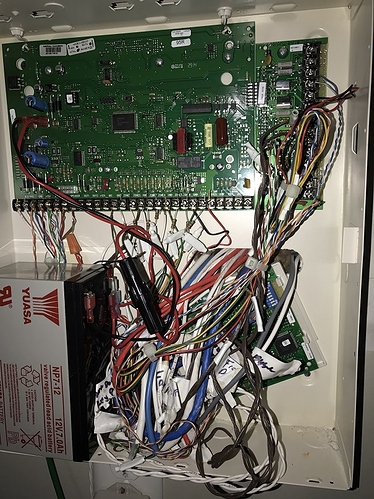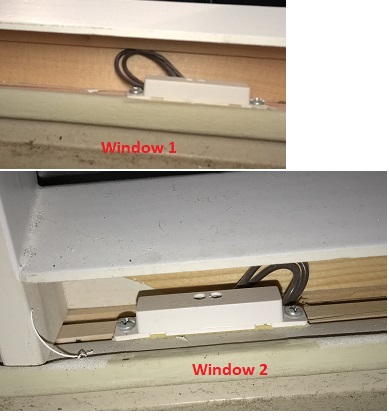I just switched to suretyDIY/ADC and am very pleased so far. As an added bonus(?), however, I’m discovering a number of issues with my Concord 4 system I was not aware of and would like to address the more important ones.
-
Zone set-up:
My panel consists of the main Concord 4 panel (8 HW zones), an expander snapcard (8 HW zones) and another expander (8 HW zones; 4 used). I can visually confirm 20 zone terminals are being used (8+8+4) in the panel. Please see attached photos. This matches the 20 HW zones my installer scribbled on a piece of paper 3 years ago. In addition, the installer had installed 3 RF zones (zones 21, 22, and 23), for a total of 23 zones in the system. Zone 21 was temporary and is not being used currently (and ADC didn’t pick it up in the sensor list).
For background, below is the zone information for the system.
[Removed]
-
Problem #1: Basement Entrance Door (Zone 11)
The system was installed during home construction, and the installer had temporarily used a wireless sensor for basement door (Zone 21) because the door was not installed when the alarm was put in place. A few months after we moved in, the installer came back, removed the wireless sensor, and installed a hardwired sensor on Zone 11. When I ran Sensor Test as part of the activation process with suretyDIY, the basement door (Zone 11) did not trip the alarm when I opened and closed several times. We almost never use this door and I did not know it was not working properly. Upon inspection, I learned that the sensor he used is the “plunger” type installed on the hinge side. (See pic.) I clicked on the roller button several times, and it seems the sensor is being detected by the panel (as per sensor activity log), but even that doesn’t seem consistent.
Questions:
- What is the best course of action for me to have a reliable door sensor for Zone 11 (basement door)? Should I get a new plunger sensor? Should I go with a wireless sensor? Any recommendations?
- If I install a new plunger sensor and it works, do I need to actively delete Zone 21, as it won’t be used?
-
Problem #2: Unidentified zones 18, 19, 20
I tested all the doors and windows on the 1st floor and basement, and can’t understand which room these three zones are associated with. Zone text descriptions don’t help, as Master BR and all other bedrooms are on the 2nd floor and none of the windows on the 2nd floor have sensors installed. I looked at the terminals on the expansion panel and there are wires attached, but none of them are labeled and I can’t figure it out.
Questions:
- Can you suggest anything I might be able to do to identify what these zones are for?
- Should I just delete these three zones?
- If I delete the unknown zones from panel memory, do I need to physically disconnect the wires from the panel terminals?
-
Problem #3: A room has sensors, but panel doesn't detect
There is a room on the 1st floor with four windows. All windows have hardwired contact sensors installed, but none of them are detected by the panel. No beeping, no sensor activity log, no response under sensor test. Of the “unknown” zones (18, 19, 20), I was thinking maybe this room is the Zone 19 Back Room Laundry (although our laundry is on the 2nd floor), and visually inspected the panel terminal (Zone 3 terminal on the second expansion module), but that’s as far as I got in terms of testing.
Questions:
- Is there any way for me to utilize the existing HW sensors in the room?
- If this zone is not reporting any activity to the panel, why is it showing up in the sensor list?
- If I cannot make the existing wiring work, should I install a couple of wireless door contact sensors? These windows are casement windows, and to be honest, I’m not sure how (or even why) a burglar would try to pry it open from the outside rather than breaking it. I just want to make use of the existing wiring if possible.
-
Miscellaneous
- Panel Time and Date: The panel prompted me to set time and date after the panel was power off for a while last night. This morning, I noticed it had the right time and date showing. Is Time/Date part of the panel-ADC sync process?
- Should I leave Phone Test to “On”? (I had deleted CS1 phone number as part of activation with suretyDIY.)
Thank you for reading through the long post! Please see all uploaded photos.




 I accept the likelihood that zones 18, 19 and 20 will remain a mystery forever, but at least I’m learning a few things…
I accept the likelihood that zones 18, 19 and 20 will remain a mystery forever, but at least I’m learning a few things…






